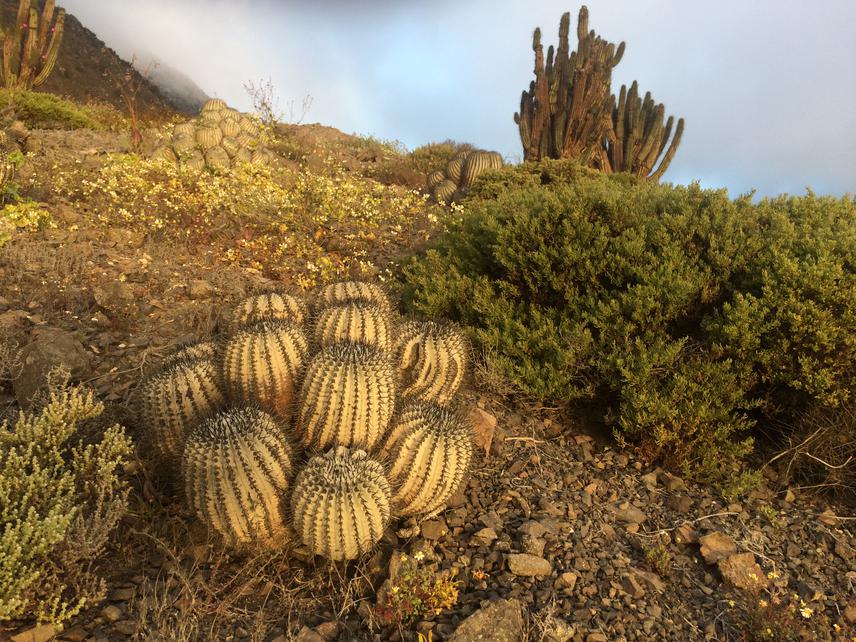Gisela Stotz
The Lomas formations are discrete plant communities or “islands” of vegetation along the coast of the Atacama Desert, with a high degree of endemism. Lomas are located on coastal mountains, surrounded by a hyper-arid habitat and maintained by fog, which provides moisture and protection from solar radiation. These communities are, however, being increasingly threatened by increased aridity associated to climate change. In this project we aim at (1) determining whether Lomas differ in species and functional diversity along an aridity gradient, and the environmental conditions driving the changes in diversity, and (2) identifying vulnerable species and (3) determine the conservation value and likely trajectories of these communities under climate change. This project will contribute to development of management strategies to preserve the flora of northern Chile.

Plant community at a Loma near Taltal.©Gisela Stotz.
This project aims at determining the diversity and vulnerability of Lomas communities to future changes in climate. The Lomas formations are discrete plant communities or “vegetation islands” along the coast of the Atacama Desert. Lomas are located on coastal mountains, surrounded by a hyper-arid habitat and maintained by fog, which provides moisture and protection from solar radiation. Lomas are species-rich communities with a high degree of endemism (over 40% of plant species are unique to these formations) and may also provide refuge for species from fog-free areas during extended droughts. Increased aridity associated with climate change is expected to lead to vegetation-dieback and overall habitat degradation in these communities, thus causing an important –and irreplaceable- loss of biodiversity. Knowledge of the structure and function of these communities is key to design efficient management strategies aimed at their conservation. In this project we aim at evaluating
(1) whether Lomas differ in species composition and functional diversity along an aridity gradient, and the environmental conditions driving species and functional diversity
(2) what is the likely trajectories of these communities under climate change,
(3) which species may be more at risk under climate change. This is especially important as the duration and intensity of droughts are predicted to increase.
In order to do this we will generate information on species composition and diversity of seven Lomas communities along an aridity gradient, to test whether Lomas are similar or different to each other, and create baseline information to monitor future changes. Further, we will study the variation in plant functional traits, within and across the seven Lomas. With this information we will explore the potential drivers of the functional variation, we will better understand how communities assemble, and evaluate which functional groups may be more susceptible to climate change. Lastly, we will evaluate species extinction risk, based on their presence across Lomas, their abundance within Lomas and their overall functional variation in traits relevant to species adaptation to aridity. Overall, the results of this project will contribute to the development of management strategies to preserve the unique flora of northern Chile.